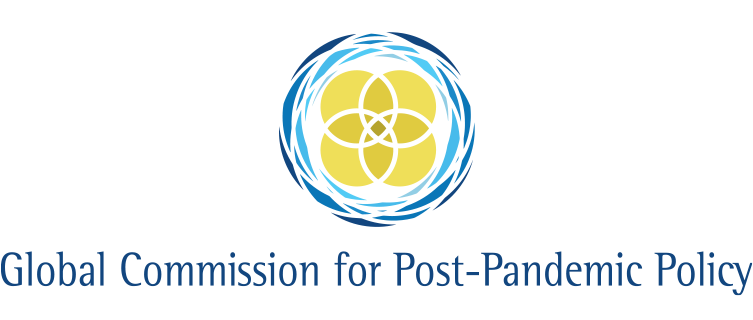Research Monitor
April 7th 2021
Health
The psychiatric impact of COVID-19
A new paper published in the journal The Lancet Psychiatry investigates the impact of COVID-19 infection on psychiatric health.
Anecdotal evidence of psychiatric disorders emerging in post-infection COVID-19 patients led Oxford’s Maxim Taquet, John Geddes, Masud Husain and Paul Harrison to seek permission to access the anonymised electronic health records of 81 million people in the United States. With this data, the researchers matched a cohort of 236,379 recovered COVID-19 patients with near-identical patients with influenza and other respiratory diseases, to compare their psychiatric health post-infection.
Their results are startling. The study suggests that upwards of one-in-three COVID-19 patients (34%) will be diagnosed with a neurological or psychiatric condition within six months of infection—much higher than the corresponding rates for other diseases. In the matched-cohort study, the most common disorders to develop were anxiety (17%) and mood disorders (14%). Neurological diagnoses such as stroke and dementia were rarer, but not uncommon in those who had been seriously ill during COVID-19 infection. In those admitted to intensive care, 7% were later diagnosed with stroke and almost 2% were diagnosed with dementia.
The mechanisms at work remain to be investigated, but the results suggest that COVID-19 is a greater stressor on both the brain and broader nervous system than previously assumed.
Covid-related mortality
A new paper published in Journal of the American Medical Association (JAMA) quantifies the number of excess deaths that occurred in the United States last year.
The raw statistics on COVID-19 mortality compiled in advanced countries are a good indicator of the direct effects of the pandemic, but do not always tell the whole story. For this reason, excess mortality figures offer a more sensitive reckoning of the pandemic’s overall toll.
To compile an accurate account of excess mortality over the last year, Steven Woolf, Derek Chapman, Roy Sabo and Emily Zimmerman from the Virginia Commonwealth University School of Medicine analysed data from the National Centre for Health Statistics, the Centres for Disease Control and Prevention (CDC) and the United States Census Bureau for the period from March 1st 2020 to January 2nd 2021.
In that time, the United States experienced 2,801,439 deaths—22.9% more than would have been expected in normal conditions—amounting to 522,368 excess deaths. That compares with 378,039 deaths officially attributed to COVID-19 during that period. The excess death rate was highest among African Americans (208.4 deaths per 100,000 people), followed by the non-Hispanic White and Hispanic populations (157.0 and 139.8 deaths per 100,000 people, respectively).
According to these figures, official COVID-19 mortality statistics account for only about 70% of COVID-caused mortality, a sizeable gap. Of the remaining 30%, some will simply be COVID-19 deaths that went unrecorded, but others are likely to be attributable to the disruptions of the pandemic. Examples might include deaths resulting from not finding adequate care in an emergency such as a heart attack, complications from a chronic disease such as diabetes, or behavioural health crises leading to suicide or drug overdose. In many countries, lockdowns and behavioural restrictions have led to fewer fatalities from normally common causes, such as road accidents and seasonal influenza, making the net excess effect even greater.
Economics
The global COVID-19 pandemic is now more than a year in, with 2.87m lives lost (as of April 7th) and enormous damage wrought to economies and individual livelihoods, though in highly varied ways. A new paper published by the Centre for Economic Policy Research (CEPR) compares both the efficacy and the cost of the different COVID-19 containment measures implemented by governments over the last year.
To shed light on the impact of different containment strategies, Alexandra Fotiou and Andresa Lagerborg from the International Monetary Fund (IMF) analysed case rate and mortality data from over 150 countries to identify which containment measures appear to have worked best at containing the virus. They then compared the economic costs imposed by these measures on growth, fiscal balances and government debt. The combined analysis allowed them to draw lessons on how best to reduce the human cost—both health and economic—of the next pandemic.
The study’s most striking finding is that there is no clear trade-off between the successful containment of COVID-19 and continued economic growth. The evidence does suggest that the best approach is to react early but maintain a light touch. The most successful nations swiftly imposed containment measures such as controls on international travel, temporary school closures, and the cancellation of public events early on, but did not necessarily impose stay-at-home orders, closures of workplaces and transport, or restrictions on gatherings and internal mobility.
What the most successful nations – which are often those with previous experience with recent coronavirus epidemics such as SARS and MERS – did do aggressively, however, was introduce strong public health measures such as wide-scale testing, contact tracing, and public information campaigns. This also suggests that public-health crises within recent memory do leave societies better prepared for future crises.
Politics
A new report published by the OECD summarises the state of school education one year into the COVID-19 pandemic.
There are few age-groups less vulnerable to COVID-19 than school children. Nevertheless, school children have suffered badly from the measures imposed to contain it. While many children have been able to continue their education in the face of school closures, thanks to online classes and strong support from parents and teachers, many have been less fortunate. This is especially true of those who do not have access to modern broadband and digital learning resources.
To investigate the impacts of COVID-19 responses on school education, the OECD analysed data from the Survey on Joint National Responses to COVID-19 School Closures, a collaboration between UNESCO, the UNESCO Institute for Statistics (UIS), the United Nations Children’s Fund (UNICEF), the World Bank and the OECD. The report summarising their findings paints a picture of a varied landscape of government responses concerning school education.
The study’s strongest finding is that that countries with the lowest pre-pandemic educational performance—based on the 2018 OECD PISA reading tests—were more likely to shut schools down and keep them shut in 2020 than were their better-performing peers. It means that the crisis has not only amplified educational disparities within countries, but will also likely amplify the performance gap between countries as well. The damage done will disadvantage those countries and those students for decades to come.
GCPPP Newsletter
We now publish a weekly newsletter to inform friends and supporters of the Global Commission’s progress and to provide updates when new content is published. Please sign up here:








